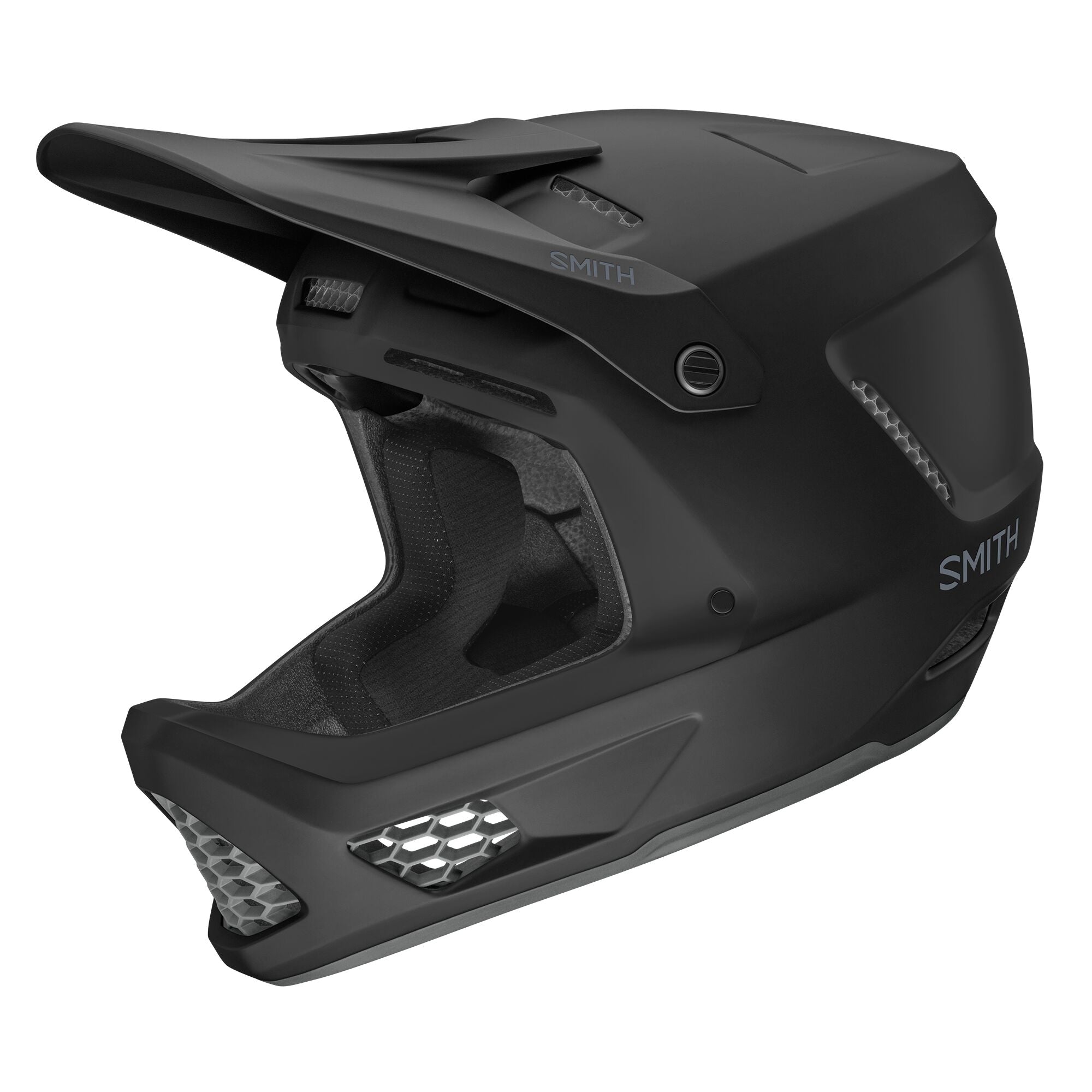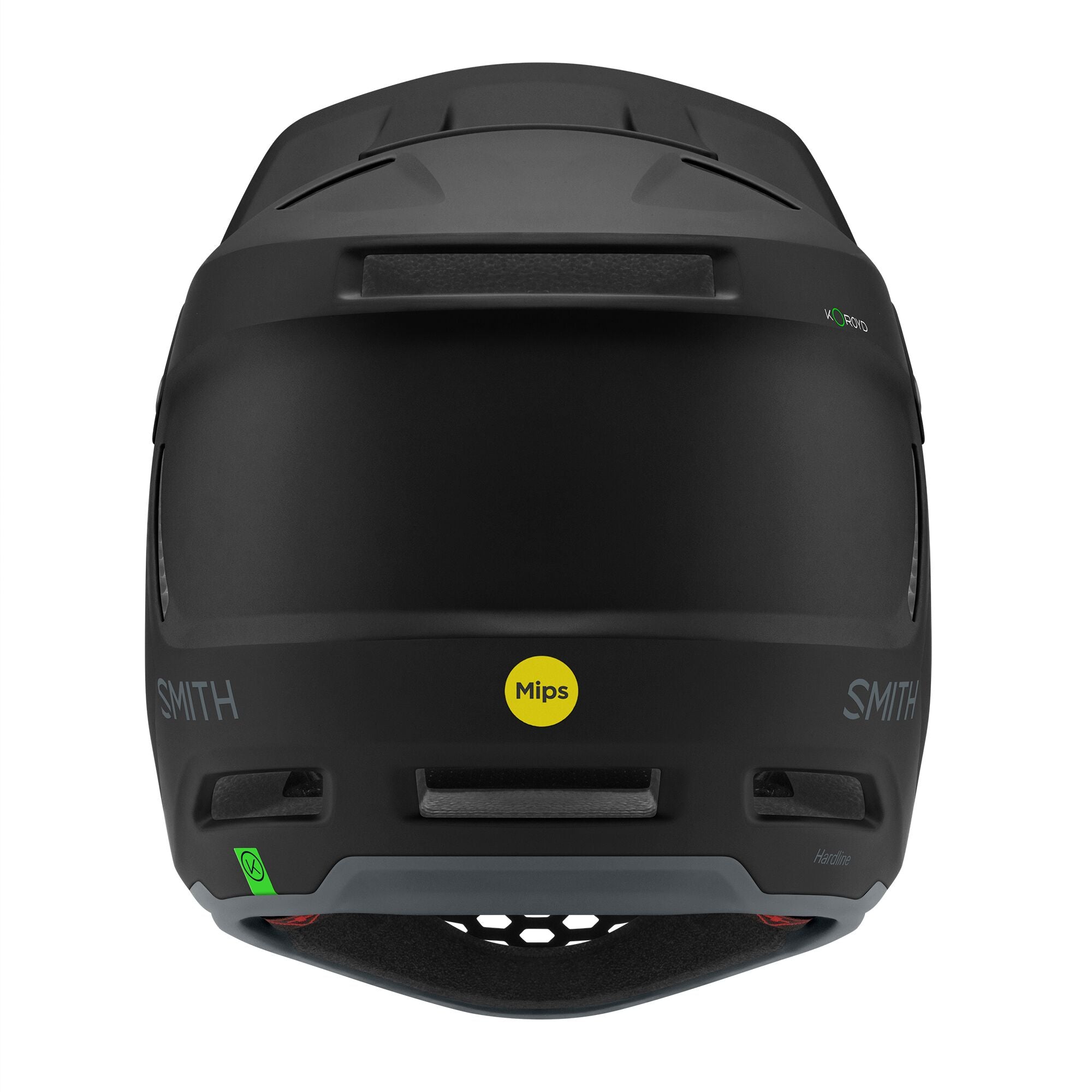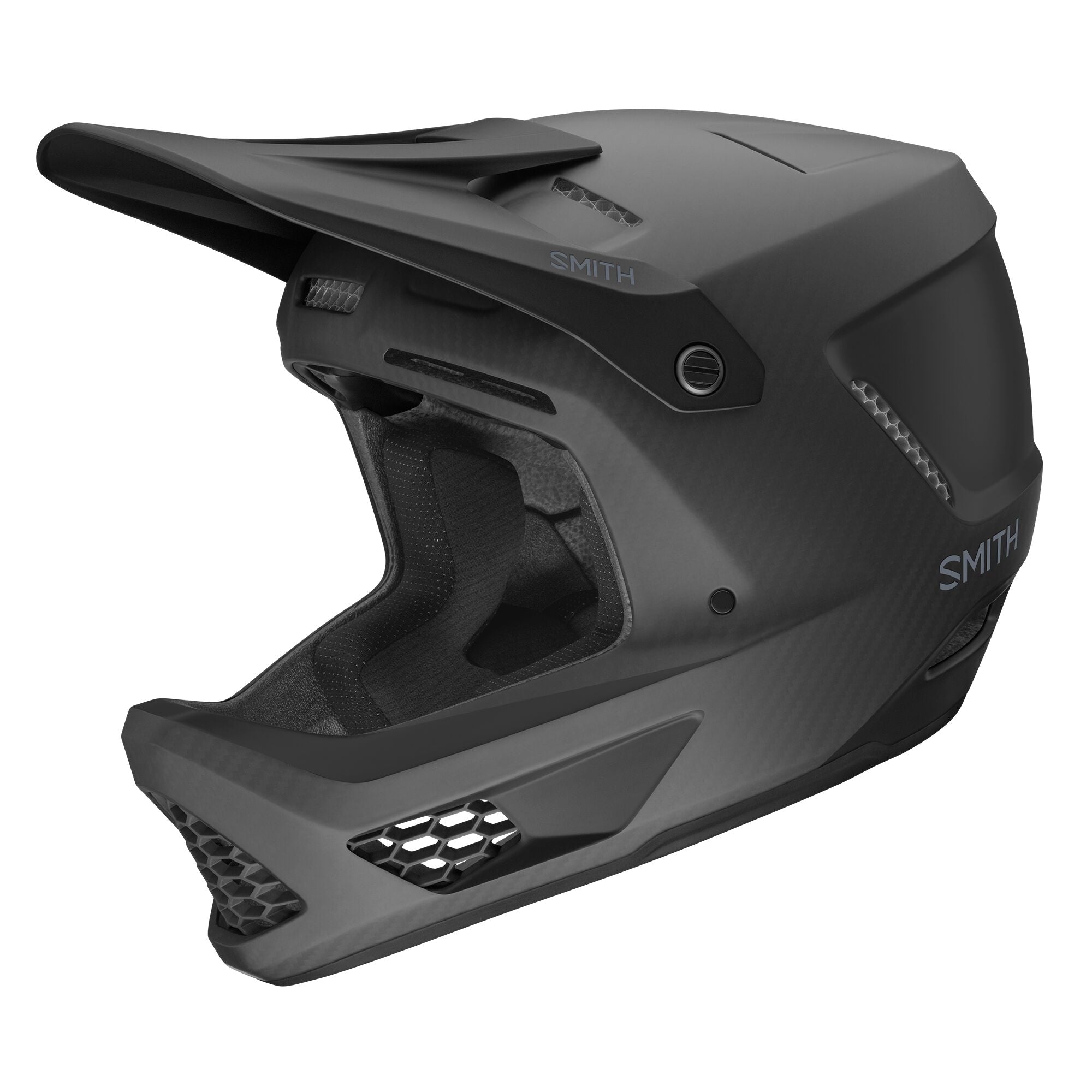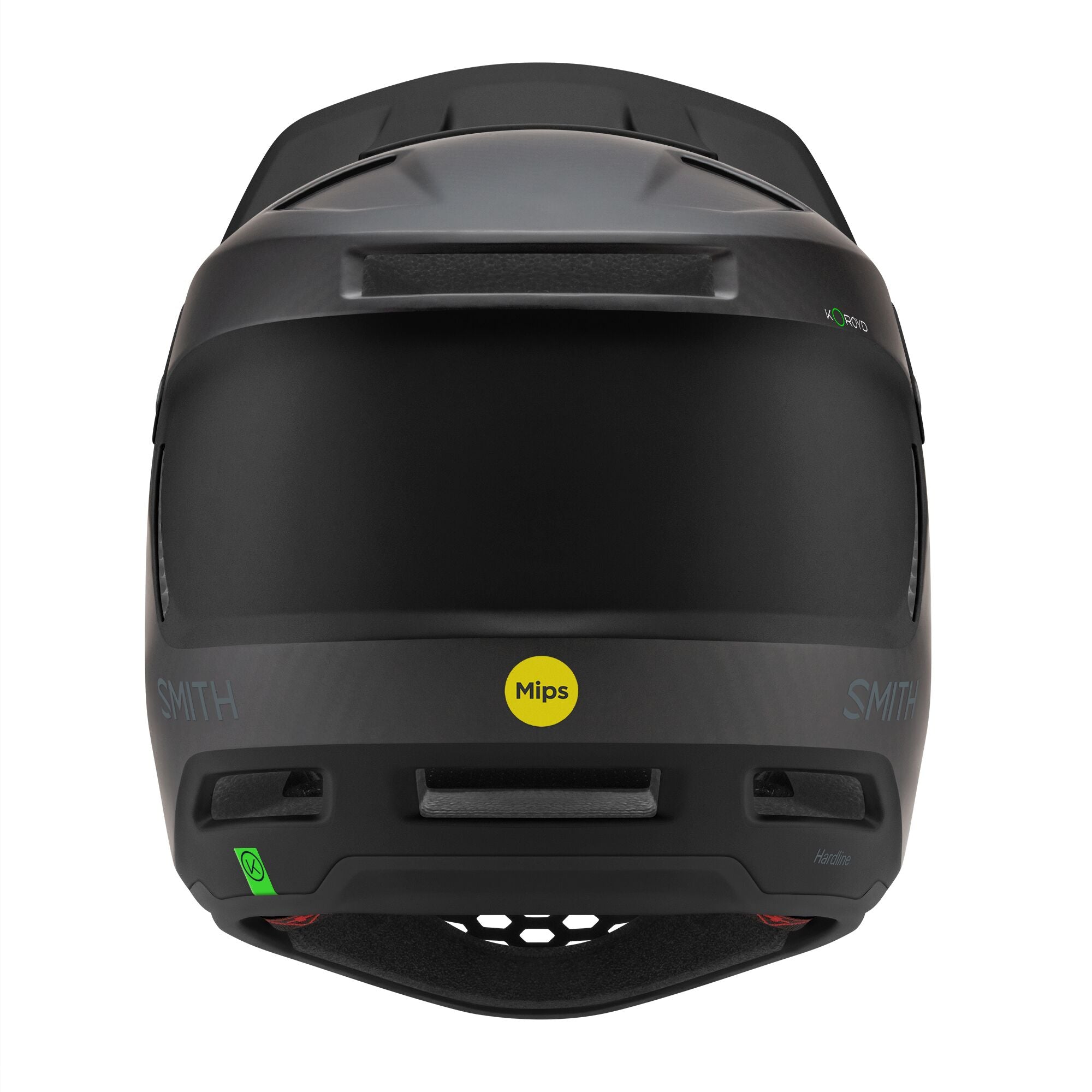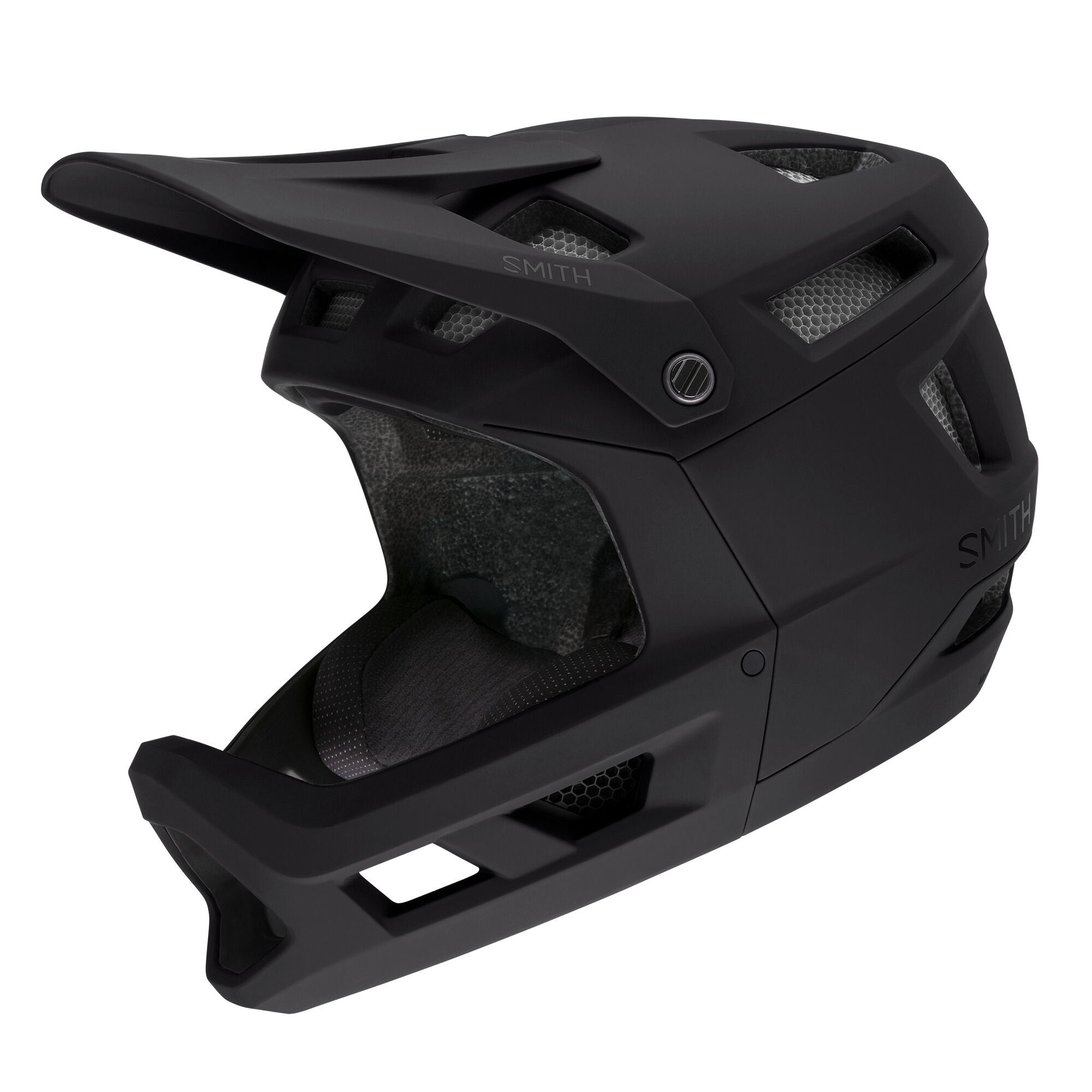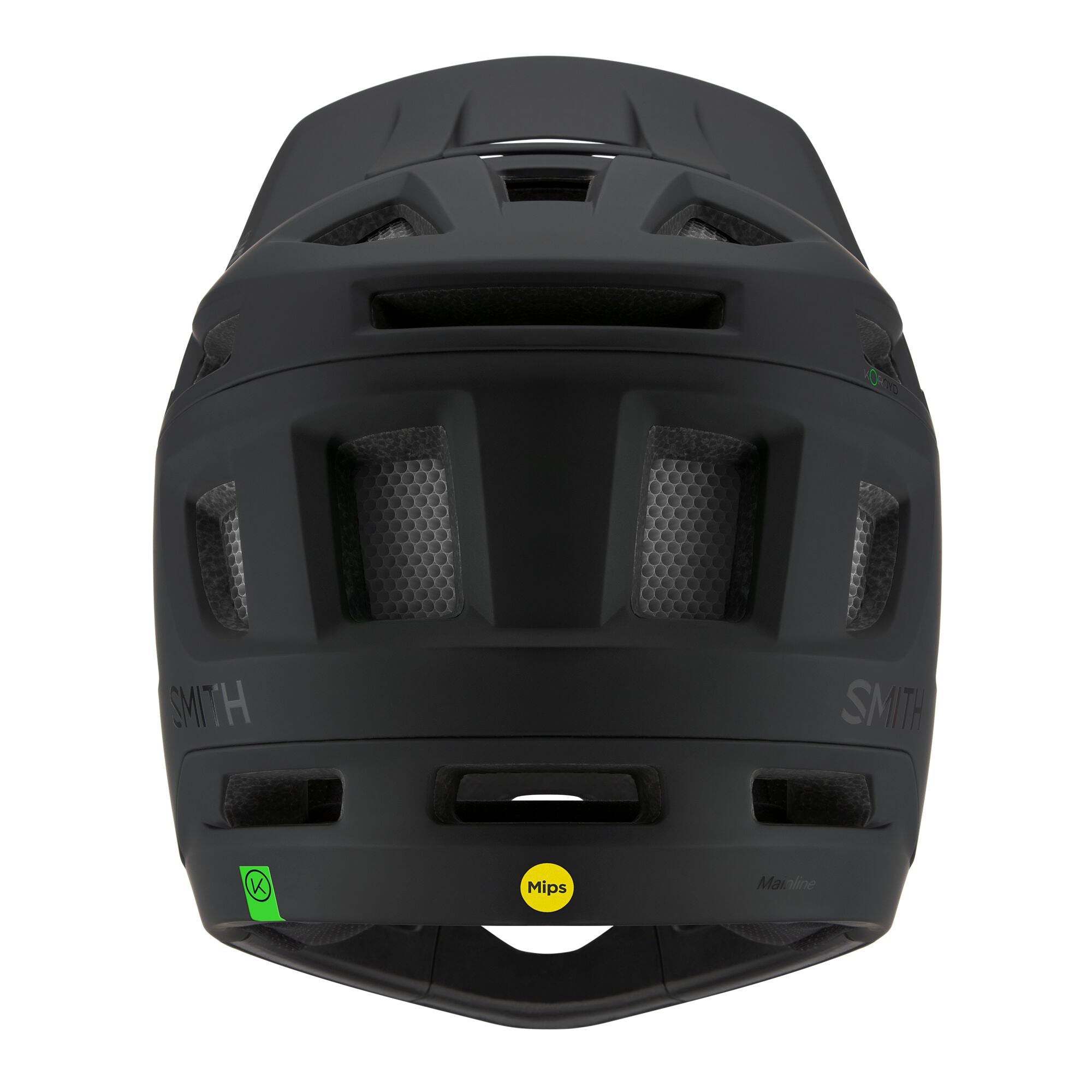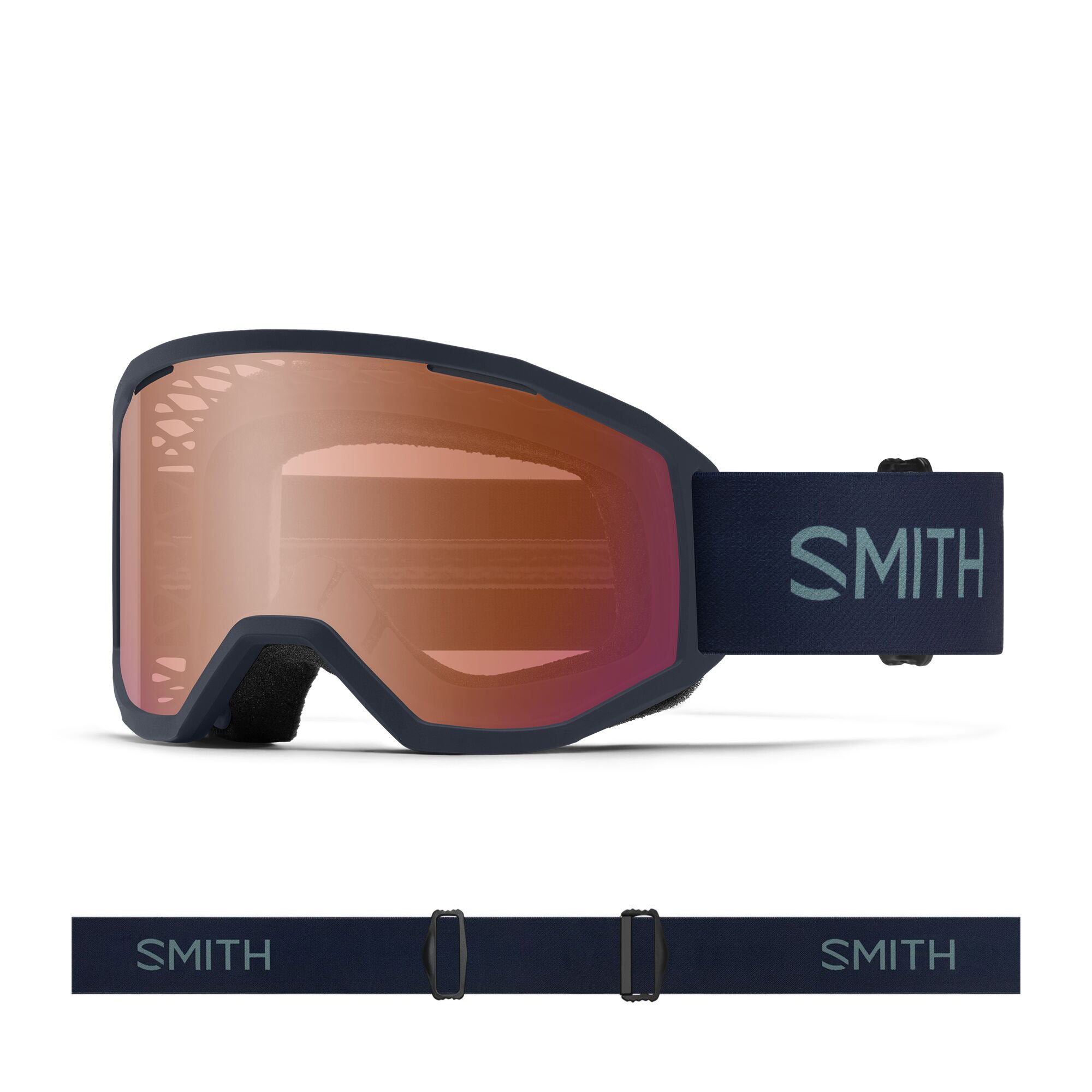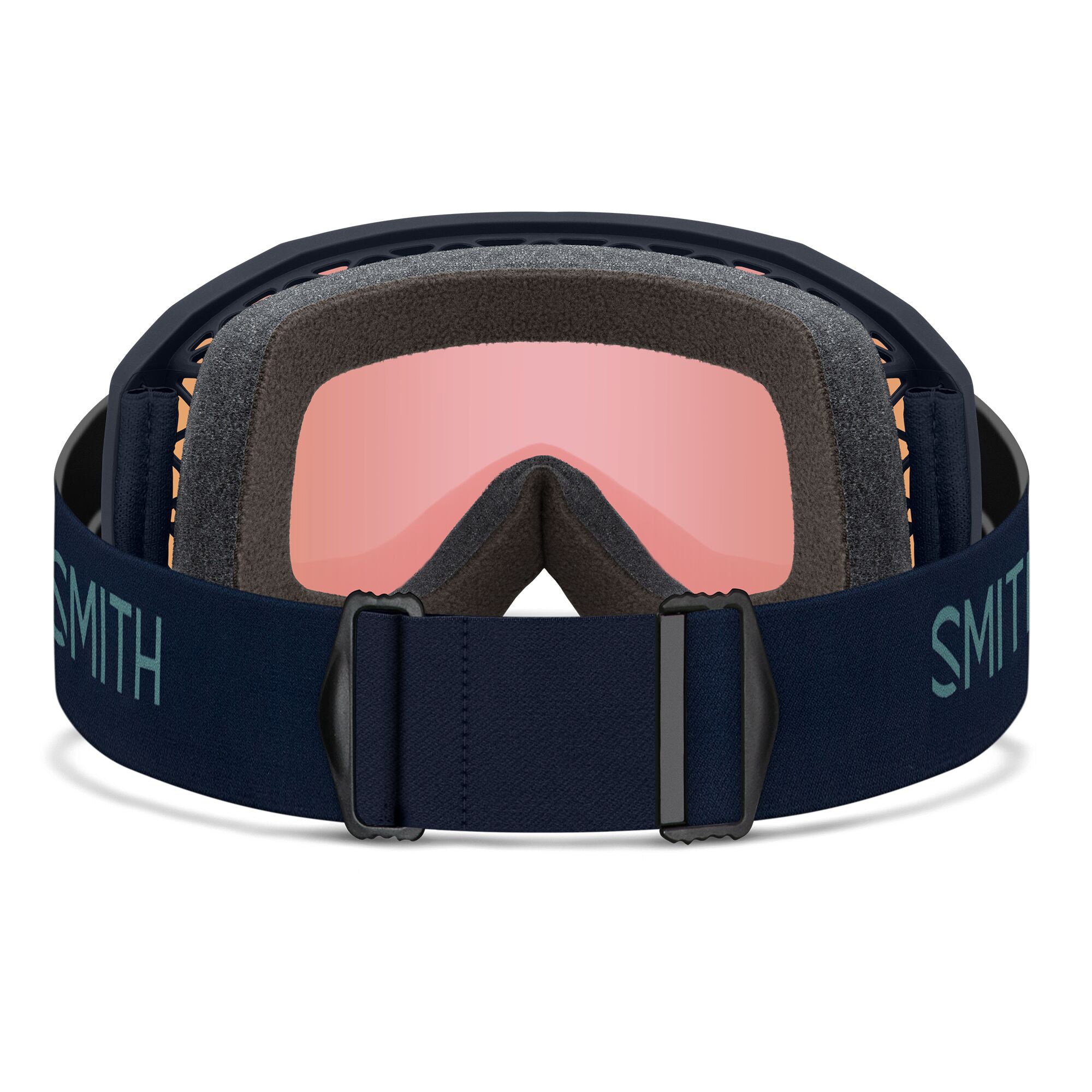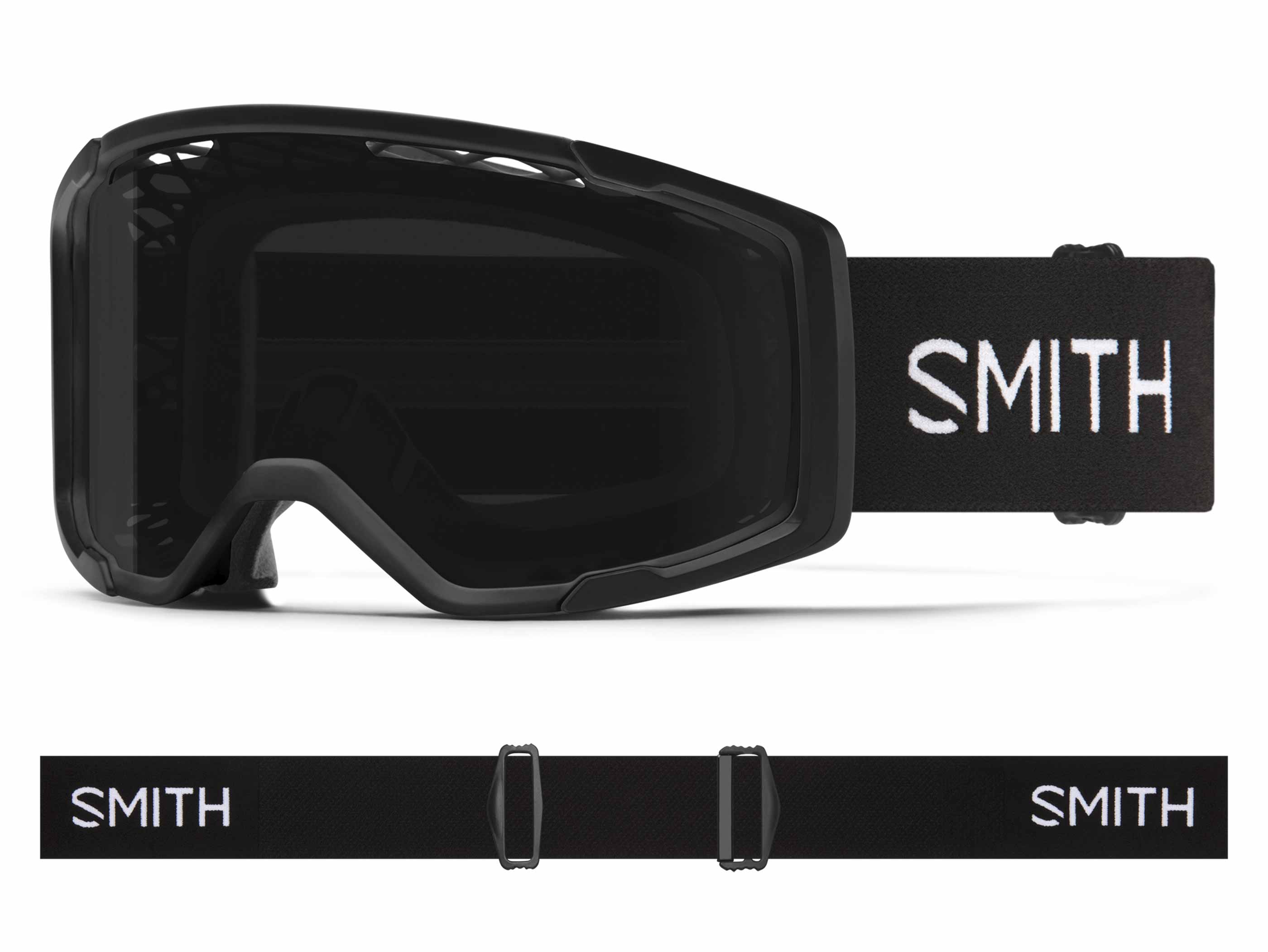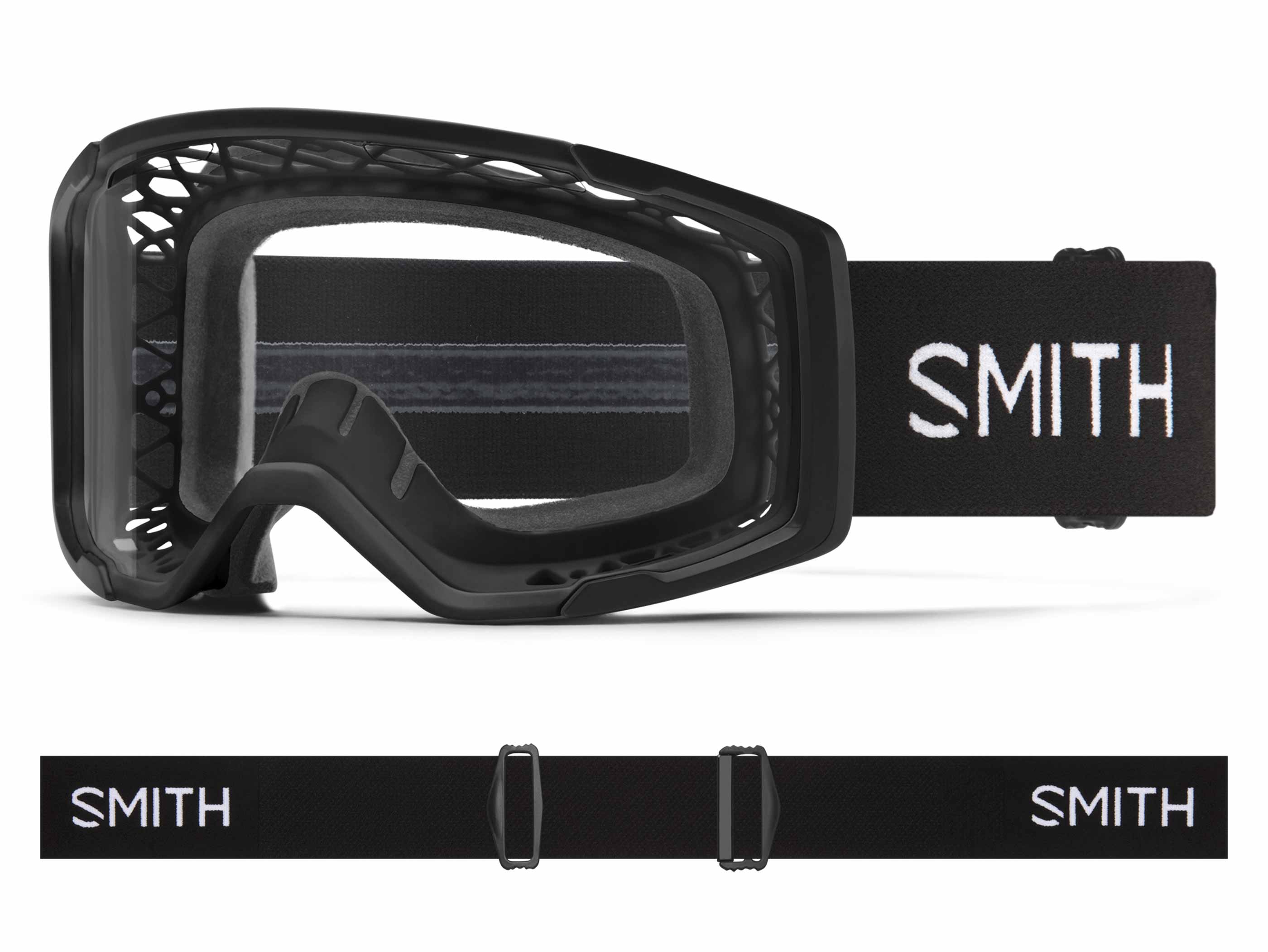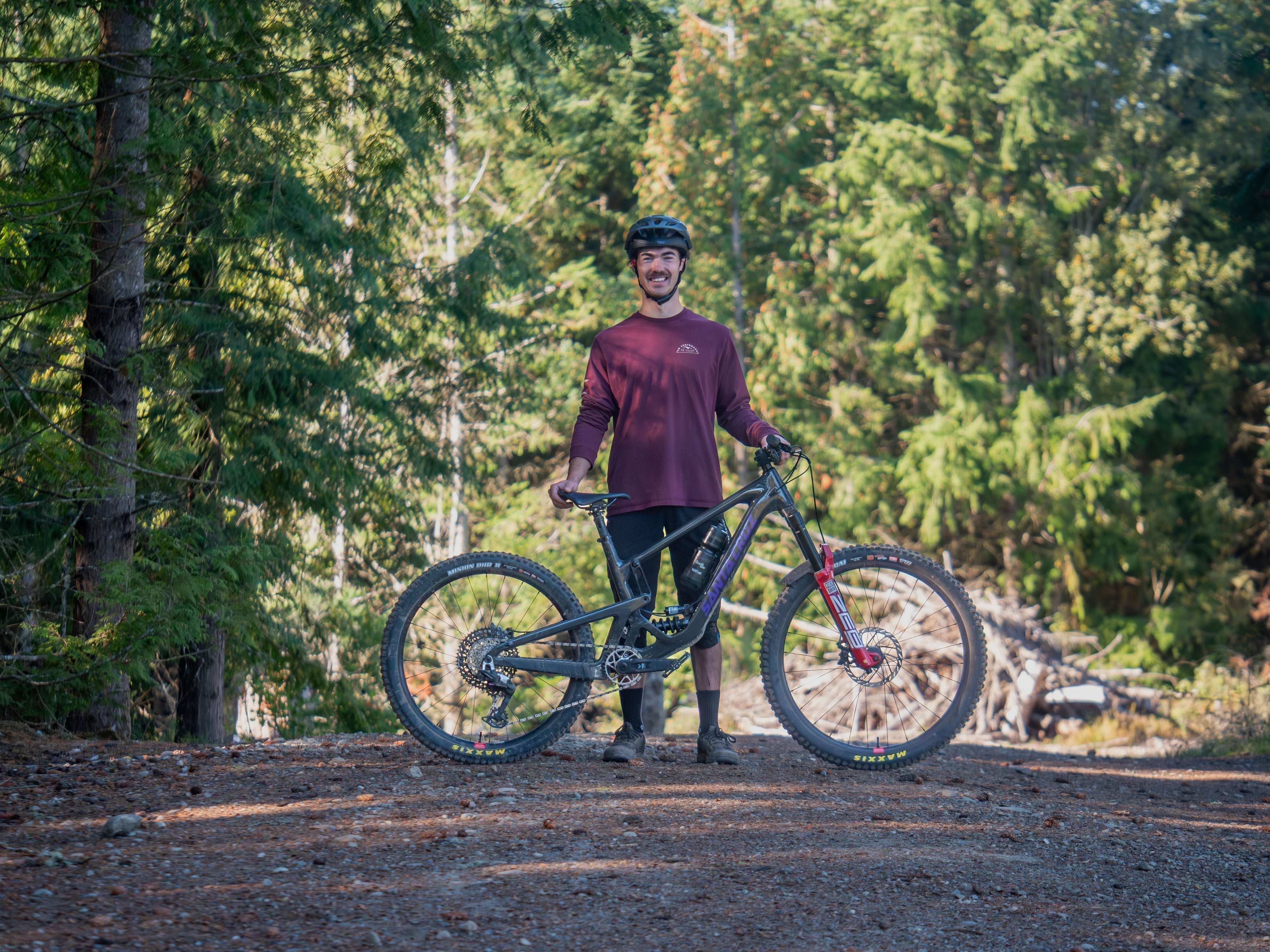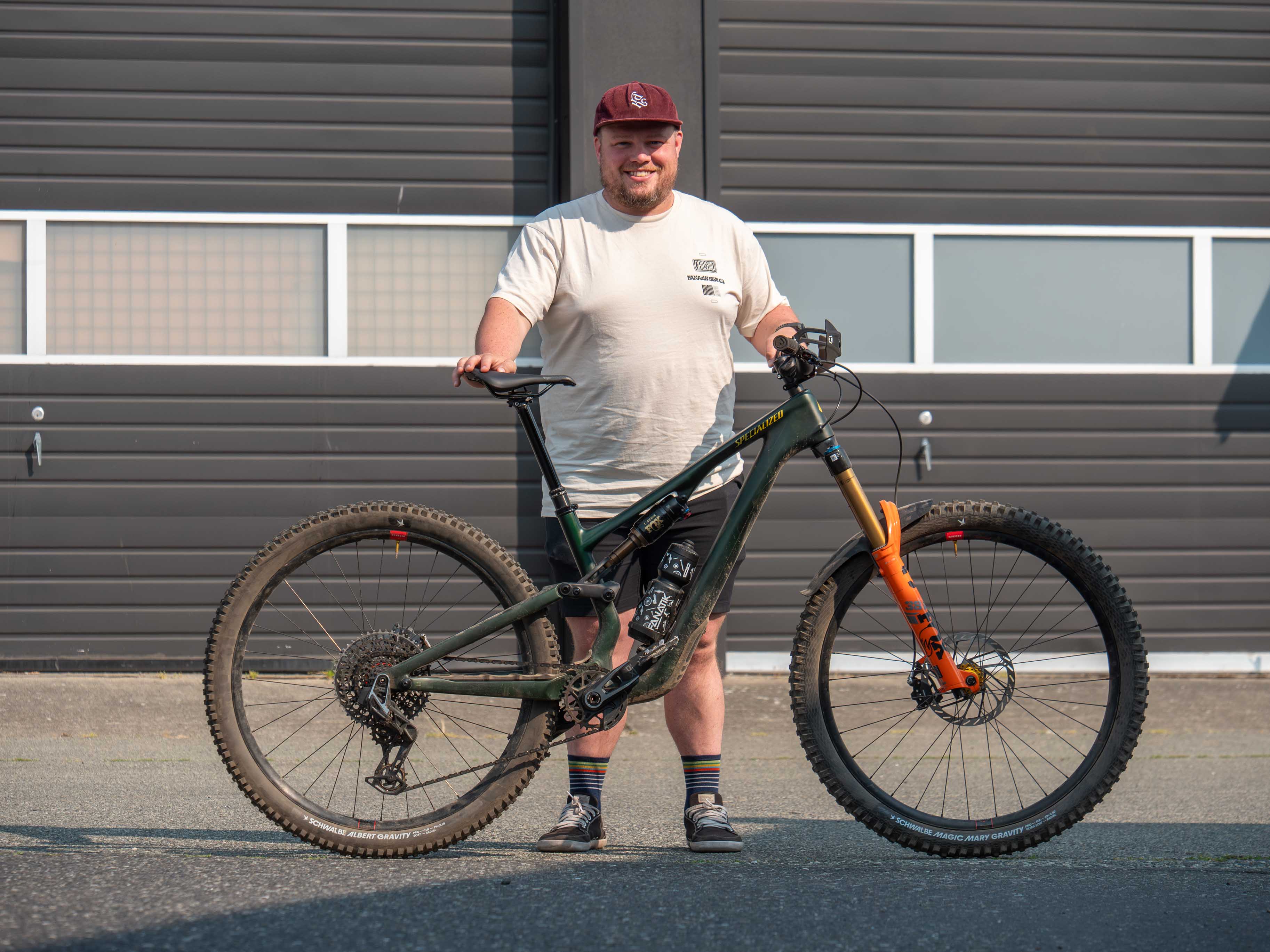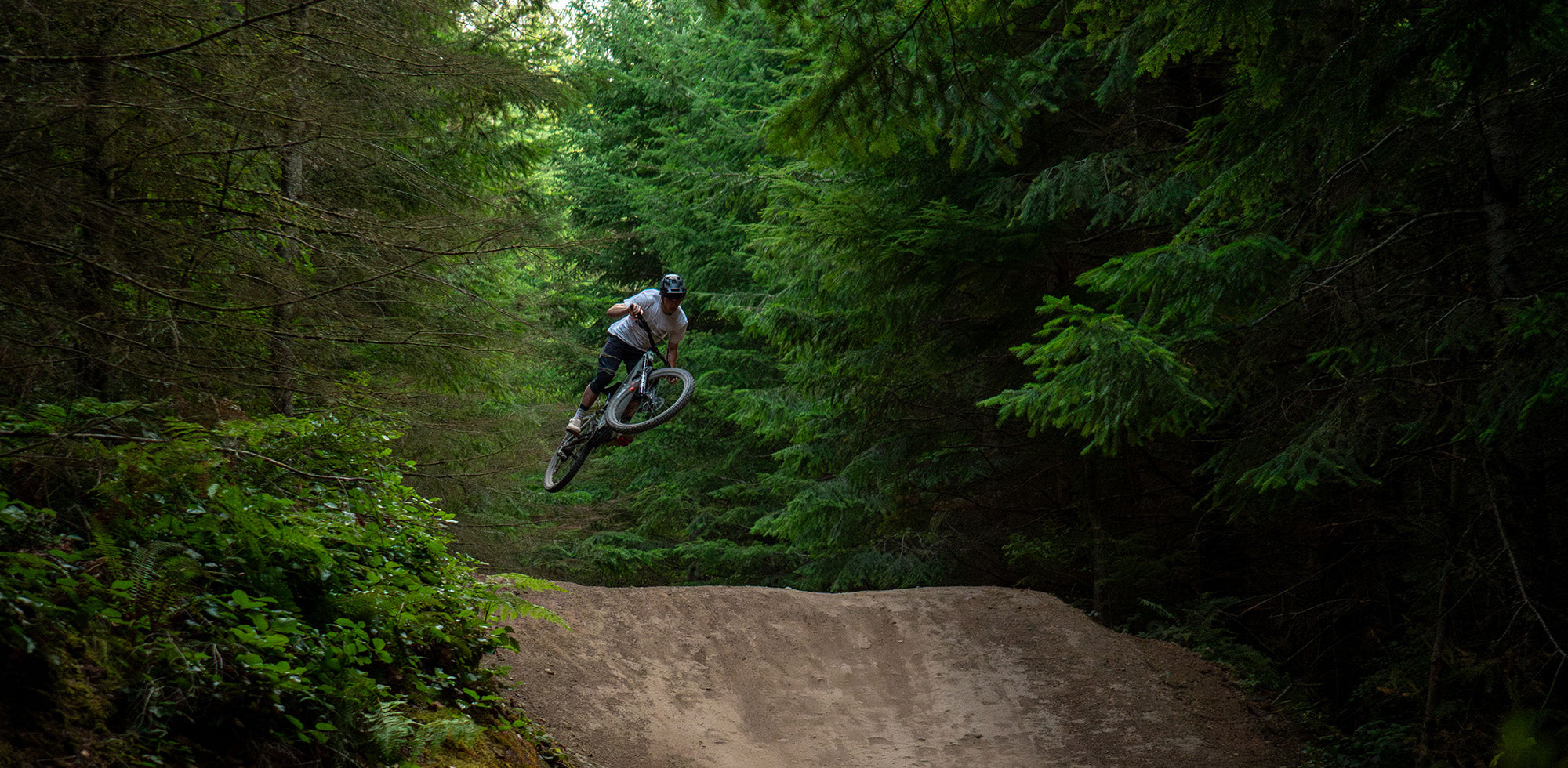For the past few seasons, the Smith Mainline has been my go-to helmet for everything from shuttle days to weekends at the bike park. As an enduro-oriented helmet, the construction of the Mainline prioritizes breathability and weight savings while still offering the added protection of a standard full face. Still, there was no hiding its enduro DNA, with a more minimalistic feel than other manufacturers’ downhill-specific full face helmets.

While the Mainline is a fantastic option for riders wanting a balance of weight savings and coverage, Smith recognized the need for an uncompromising downhill helmet that prioritizes all-out protection. Smith’s newest helmet, the Hardline, is a full face helmet that emphasizes coverage and impact protection. This all-new helmet from Smith sits atop their product lineup as their most protective full face to date.
Smith Hardline / Hardline Compared to Mainline
Designed for downhill racers and park rats alike, the Hardline features a traditional full face profile with a beefed-up chin bar and less ventilation than the Mainline. The added protection comes at a slight weight penalty, with a size medium Hardline weighing in at 990 g, 220 g heavier than a size medium Mainline (770 g). While noticeable when holding the two helmets side by side, the added weight is offset by the increased coverage and potential safety gains of a more robust outer shell.

Fit / Protection
The Hardline utilizes a full coverage KOROYD panel for impact protection paired with MIPS for rotational impact dissipation. The chin strap of the Hardline uses a traditional D-ring fastener. While not as glamorous as other modern fasteners on the market, I’ve always preferred the traditional D-ring design for its range of adjustability, secure fit, and long-term reliability.

Available in three sizes, and maintaining a similar fit as Mainline, a size medium fit me well. Smith provides riders with interchangeable cheek, crown, and neck padding to fine-tune contact points as needed. Additionally, the cheek pads of the Hardline have a quick-release to aid with emergency response in the event of a serious crash.

Smith has incorporated integrated collarbone impact protection in the Hardline, consisting of rubber padding along the edge of the outer shell. This rubber area helps to disperse impacts, potentially reducing the chances of a collarbone injury. From my experience, the ground is the most likely perpetrator for broken bones, not the edge of the helmet. However, any additional safety feature targeted at reducing serious injuries is a bonus.
Riding Impressions
I was only able to get a handful of rides with the Hardline before being sidelined for the season by a wrist injury. While not getting the summer’s worth of bike park laps I was hoping for, I was still able to form some initial impressions of the Hardline and how it compares to the Mainline.

Having become accustomed to the enduro-oriented Mainline these past few seasons, the increased coverage of the Hardline was immediately apparent. The Hardline has a slightly more enclosed feel than the Mainline, with less ventilation and a larger chin bar. Even with fewer vents, the Hardline is breathable compared to other helmets in its category, partially due to the inherently breathable nature of its KOROYD panelling.
While the increased weight of the Hardline is noticeable in a side-by-side comparison, it goes unnoticed when descending. Those extra 220 grams could add up over the course of a sustained fire road climb, but the more limited ventilation in comparison to the Mainline would be a larger deterrent from pedaling.

Luckily, I never fully tested the impact protection of the Hardline, but the robust outer shell and chin bar do offer a perceivable increase in security compared to the Mainline. The design of the Hardline makes it an excellent option for riders who have favored the Mainline for its feel and construction but want the utmost sense of security.
Loam MTB
Smith’s Loam goggle is the more budget-oriented of the two I tested. The Loam features a medium fit with ample lens coverage. It maintains the same quality fit as the Rhythm, while offering standard lenses instead of Smith’s Chromapop technology. The standard Blue Mirror lens worked well in sunny conditions but was a bit dark in the woods. There was a noticeable difference in contrast of terrain with the standard typical lens, compared to the higher-quality Chromapop lens of the Rhythm.

The general fit and feel of the Loam is on par with other high-end goggles, and its profile integrates perfectly with the Hardline helmet. More often than not, I found myself running the standard clear lenses for the constantly changing cloud cover and thick canopies of Whistler Bike Park. At their price point, the Loam goggles are a fantastic option for quality eye protection without worrying about inevitable scratches.
Rhythm MTB
The Smith Rhythm goggles provide clear vision while offering some select few features that make them stand out from other goggles on the market. As Smith’s high-end offering, Rhythm goggles come with a tinted Chromapop lens and are compatible with Smith’s MTB Roll Off Kit for wet conditions. The Rhythm goggles have an ultra-low profile frame, offering clear visibility and integrates perfectly with Smith helmets.

The Contrast Rose lens I tested was versatile enough to seamlessly switch from sunny clear cut areas to heavily wooded sections of trail with ease. The Chromapop lens provided excellent visibility in lower light settings, helping to easily discern lines amongst jumbled roots and rocks. The extended sides of the frame were one of the most noticeable improvements over the Loam, allowing me to easily remove the goggles without smudging the lenses. The fit and feel of the Rhythm are an example of what riders should expect from high-end eyewear.
Verdict
The Smith Hardline is the burlier big brother to the enduro-oriented Mainline. For riders who spend the majority of their time shuttling or lapping the bike park, the Hardline and its increased coverage are the best option. If you primarily spend your time between the tape racing local enduros, the Mainline and its ultra-breathable construction will be a better choice. Both helmets pair perfectly with the profiles of the Loam and Rhythm goggles, leaving it up to the rider how they’d like to mix-and-match their Smith gear to best suit their riding and budget.


